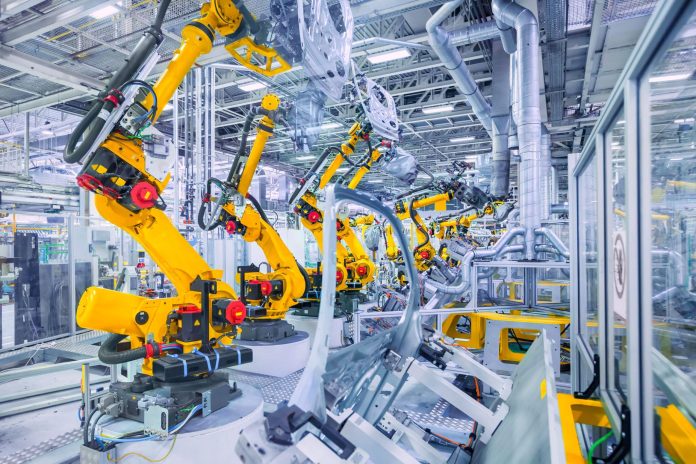How will 5G impact in industrial IoT manufacturing implementations?
Industry 4.0 will pave the way for more flexible, efficient and sustainable production lines in manufacturing facilities. In this scenario, 5G technology plays a key role as it is one of the main enablers of industrial IoT manufacturing implementations. This technology enables manufacturing firms and their supply chain partners the opportunity to use and implement emerging technologies such as artificial intelligence and machine vision, among others, with the aim of improving certain manufacturing processes.
In these futuristic factories, connected devices will be able to sense their environments and interoperate with each other, making decentralized decisions. Many expect this transformation will chiefly rely on the capabilities of next-generation 5G networks.
5G networks offer manufacturing companies the possibility to build smart factories and take advantage of technologies such as automation, artificial intelligence, augmented reality for troubleshooting, and the Internet of Things (IoT). The low latency, high reliability, and increased speed of 5G networks are essential to support emerging technologies and their novel applications in this field, such as process automation, remote monitoring, and collaborative robots, among others.
According to technology research firm ARC Advisory Group, 5G will play a key role to enable the full potential of industrial IoT in the manufacturing field. “The potential is huge, and Industrial IoT already enables whole new business models. But before the full potential of the Industrial IoT can be realized, a modern, open communications infrastructure must replace some of the outdated, proprietary solutions commonly in use in industrial applications. Industrial 5G appears poised to provide that infrastructure,” the firm said.
Smart manufacturing depends on reliable high-speed connectivity, a key feature of 5G
Telit noted that smart manufacturing depends on reliable high-speed connectivity, and most factories are still using industrial Ethernet and legacy wireless technology based on Wi-Fi, which has limited capabilities.
“5G promises to deliver that needed connectivity. While the 5G available today is just the first wave, designed to accommodate broadband capability, the manufacturing industry is eager to try it out. There’s significant interest in private LTE networks, such as Citizen Broadband Radio Service (CBRS) OnGo in the U.S., and the German government is granting licenses to factories for particular spectrum ranges. High-profile German companies such as ALDI, Mercedes-Benz and Lufthansa have acquired pieces of the spectrum to implement 5G at their facilities,” said Marco Contento, Director of Technologies at Telit.
“While experimenting with the current Release (Rel) 15 5G technology, manufacturers are also anticipating how future 5G releases will impact their operations. While Rel 15 centers on broadband, Rel 16 prioritizes ultra-reliable, mission-critical communications, enabling use cases in which real-time communication is essential. This innovation could allow industries to replace technology such as Ethernet and realize the IIoT with wireless connectivity that’s reliable, ultra-fast and able to deliver data with minimal latency,” the executive added.
Contento also highlighted some of the challenges ahead for the implementation of 5G in the IoT manufacturing field. “Industry leaders are reluctant to invest in technology that’s different from what they are accustomed to and requires a new approach to networking infrastructure. Given the excitement and rapid pace of innovation around 5G, these challenges are likely to be overcome in the next few years. While 5G has yet to be fully realized in industrial and manufacturing settings, it’s set to play a fundamental role in how industrial sites work in the future.”
For more 5G manufacturing content, check out the following:
- What is 5G manufacturing and what does it mean for productivity?
- Top 5 5G manufacturing use cases
- Three 5G manufacturing case studies: Audi, Haier, Bosch
- What’s the role of a digital twin in smart manufacturing?
- 5G manufacturing use case spotlight: Automated guided vehicles
- 5G manufacturing use case spotlight: Real-time video analytic
- How to improve Overall Equipment Effectiveness with 5G
- 5G manufacturing use case spotlight: Additive manufacturing
- What is lean manufacturing and how can 5G help?
- Top 5 5G manufacturing use cases
- What’s the role of AI in 5G manufacturing?
- What is a digital thread and what does it mean for manufacturers?
- What’s the role of edge computing in 5G manufacturing?
- 5G manufacturing use case spotlight: Industrial automation
- 5G manufacturing use case spotlight: Troubleshooting using a digital twin
- How can 5G enable industrial IoT manufacturing implementations?
- 5G manufacturing use case spotlight: AR remote assistance

